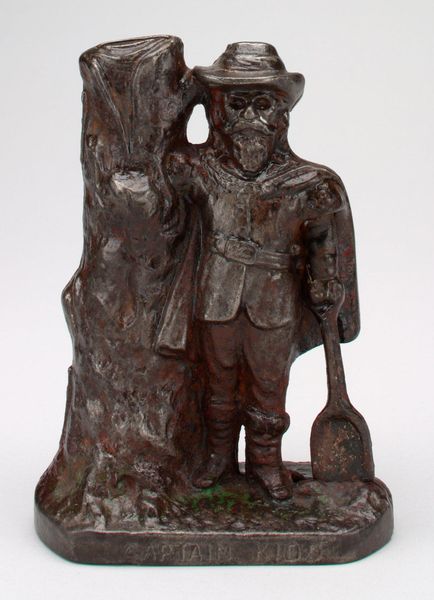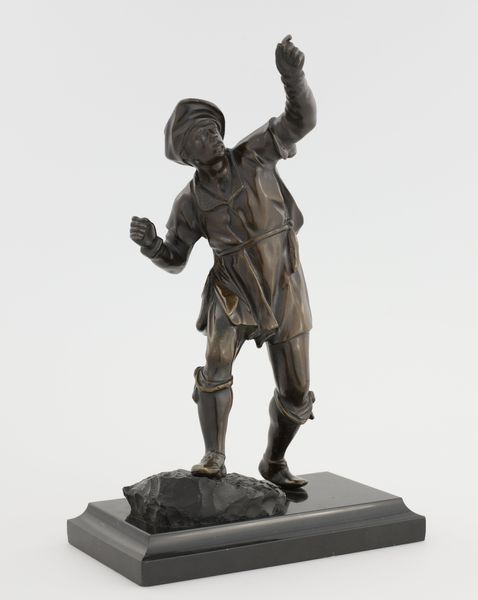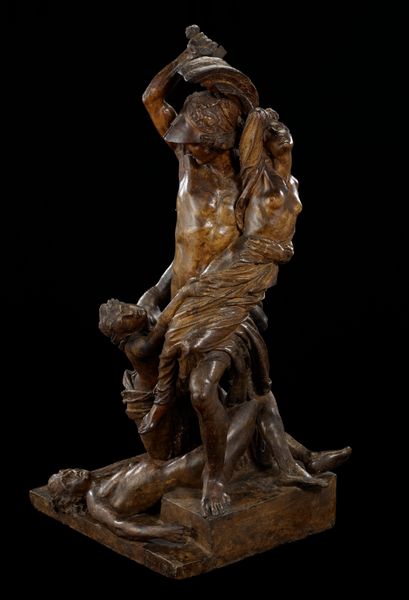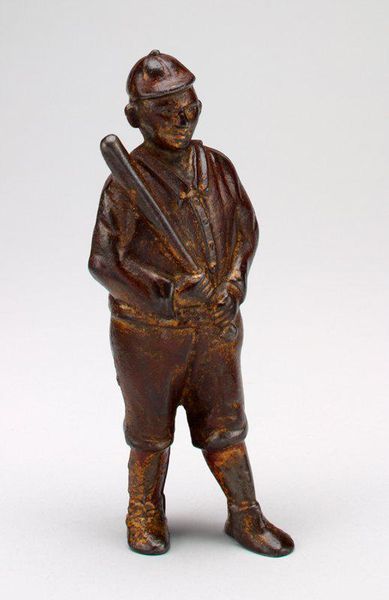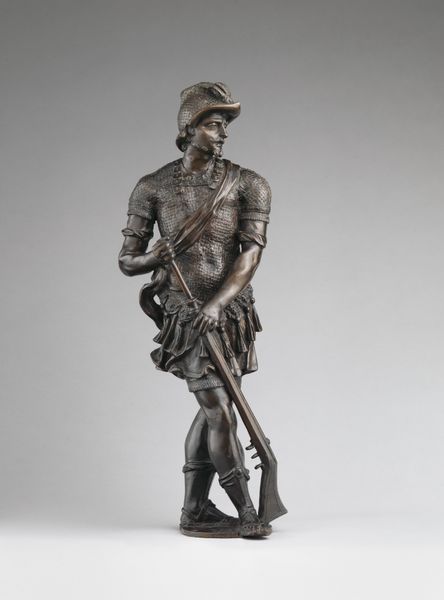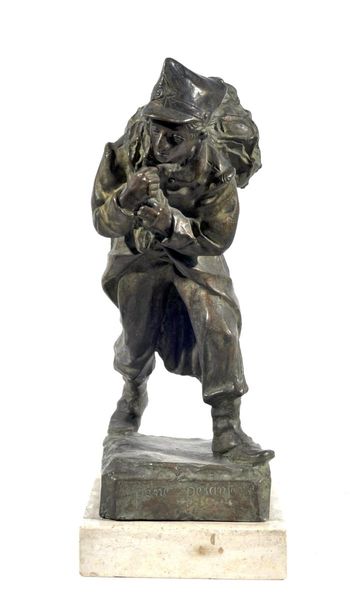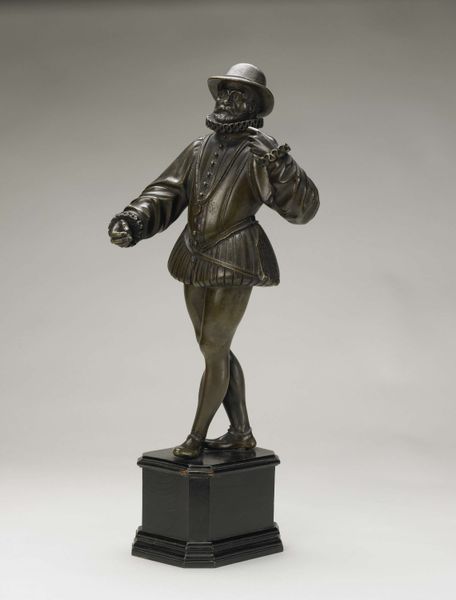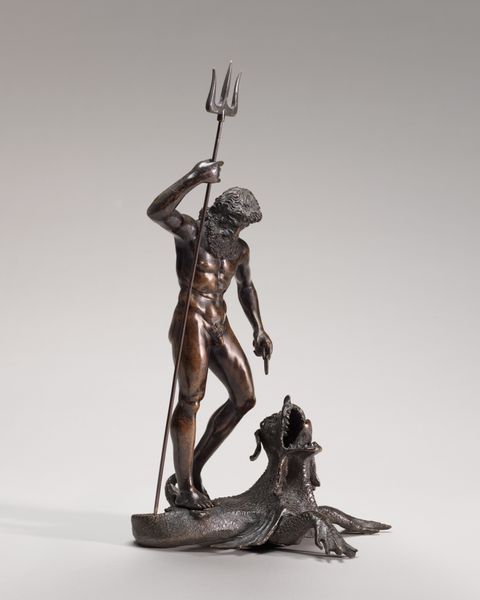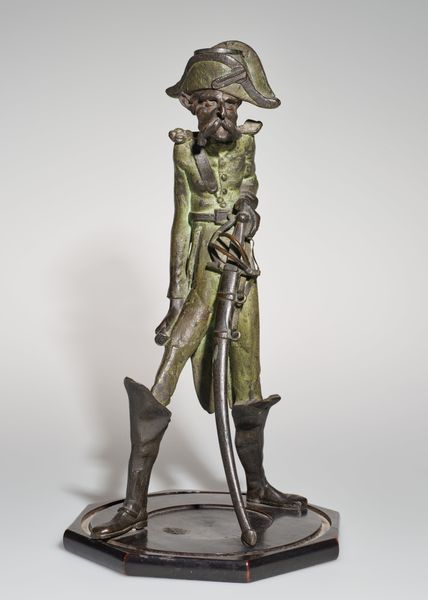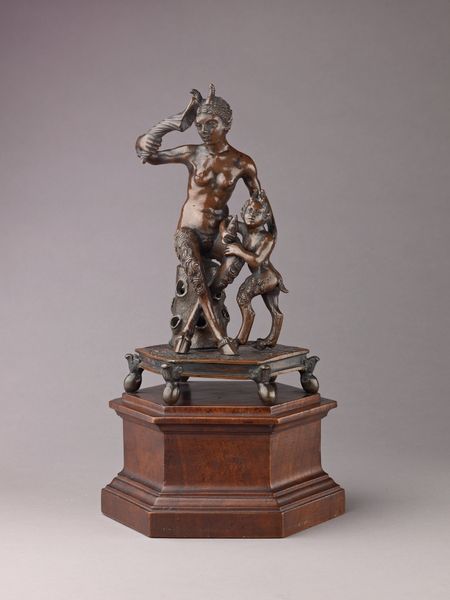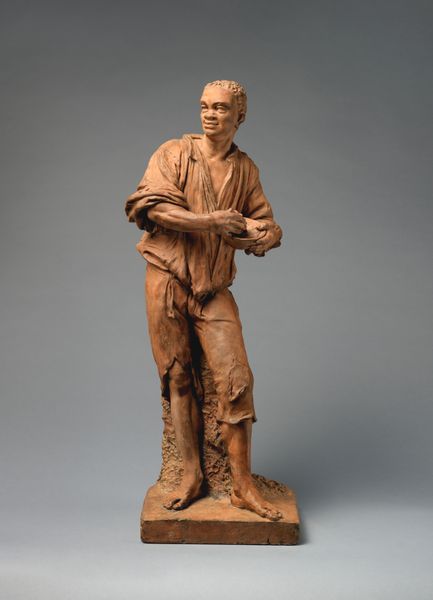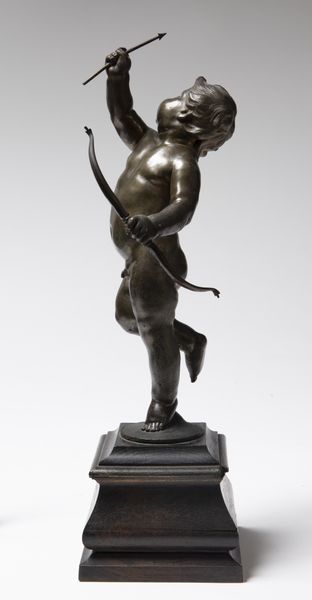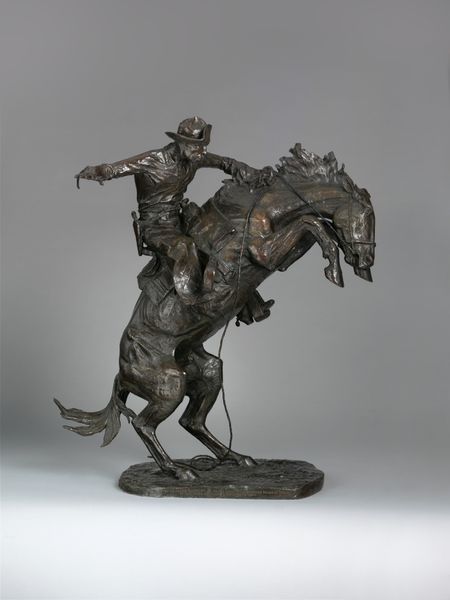
bronze, sculpture
#
portrait
#
statue
#
sculpture
#
bronze
#
figuration
#
sculpture
#
realism
#
statue
Copyright: Public domain
Curator: Rodin's bronze sculpture, simply titled "Jules Bastien Lepage," offers an interesting point for discussion. What strikes you first? Editor: Immediately, the tension between realism and roughhewn materiality jumps out. The bronze has this earthy, almost unfinished quality that, in a way, democratizes the portrait. It brings Lepage down from the pedestal a bit. Curator: I agree; it challenges conventional notions of portraiture and heroic sculpture. Here we have Rodin, ostensibly paying tribute to a fellow artist, yet he eschews idealized form for a visceral depiction of the creative process itself. Look at the raw texture, the clear manipulation of the bronze. Editor: Exactly! Think about the social context: late 19th century, burgeoning artistic movements reacting against academic traditions. Rodin is almost enacting a working-class aesthetic here. It's about labor and the active process of making rather than polished perfection. Lepage was known for portraying rural laborers in paintings. I see a deliberate connection. Curator: A compelling link! I'm thinking, too, about the accessibility of bronze as a medium. Unlike marble, for instance, it allows for relatively easier reproduction and dissemination, broadening access to art—in theory, anyway. And in comparison to how it might have been painted. Editor: It definitely disrupts the hierarchy of materials. High art, traditionally marble and painting, suddenly rendered in an industrial medium. The pose, slightly hunched, isn’t one of grand pronouncements. It suggests thought, labor, maybe even vulnerability. Is Rodin celebrating artistic work or questioning notions of masculine genius, maybe? Curator: Possibly both? It's a fascinating interrogation of artistic identity, labor, and materials, speaking volumes about Rodin's innovative approach. Editor: Agreed. The sculpture's power comes not just from its realistic representation, but from the social narrative embedded in its materiality and presentation. Food for thought. Curator: Indeed. A powerful piece.
Comments
No comments
Be the first to comment and join the conversation on the ultimate creative platform.
